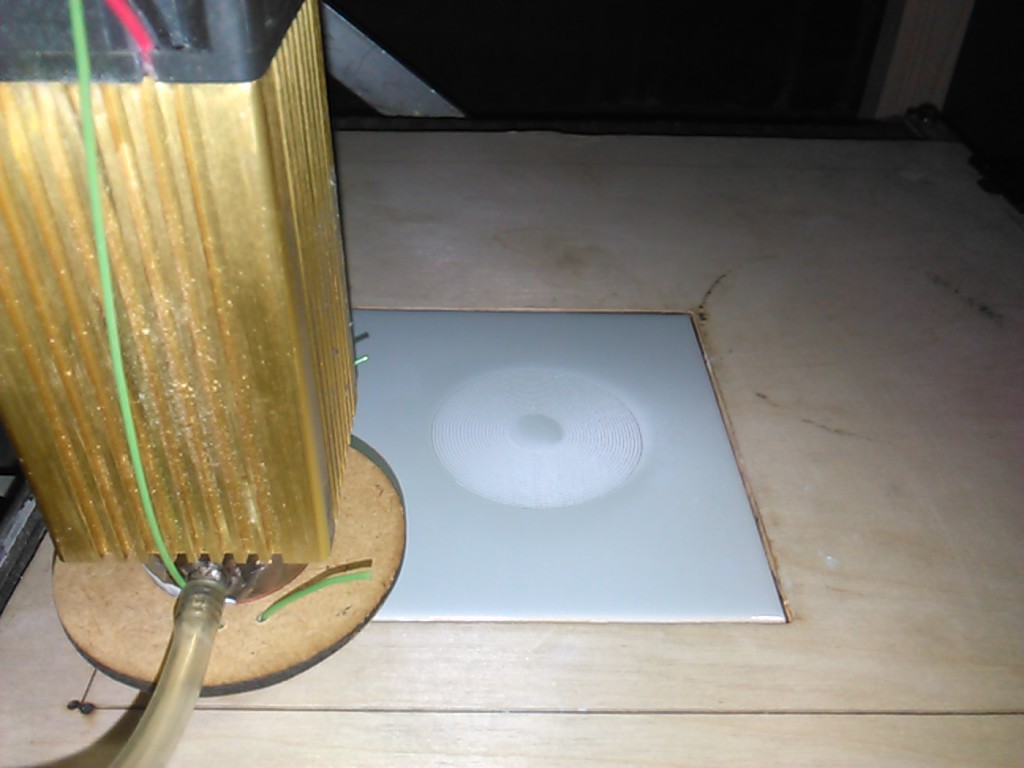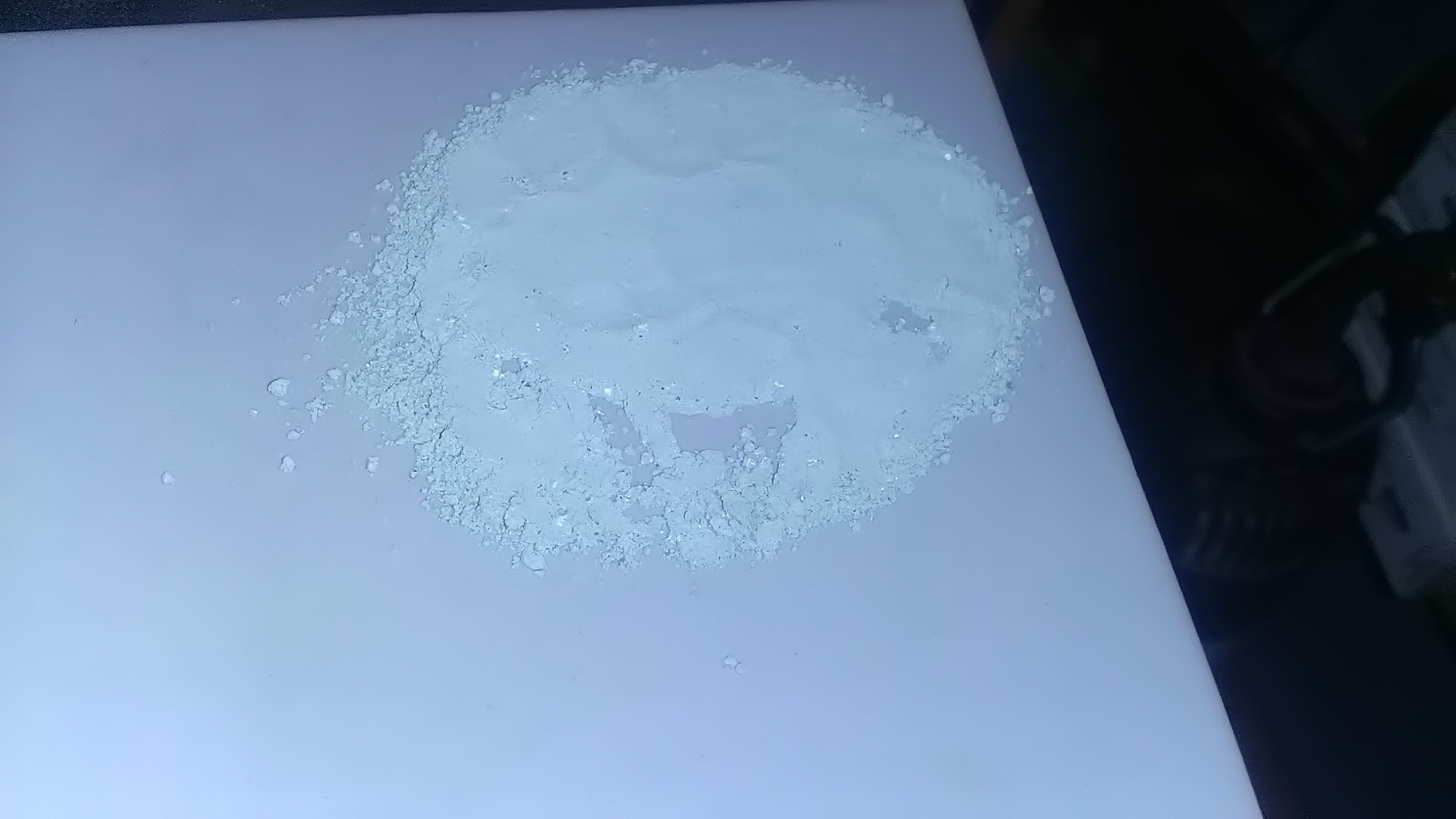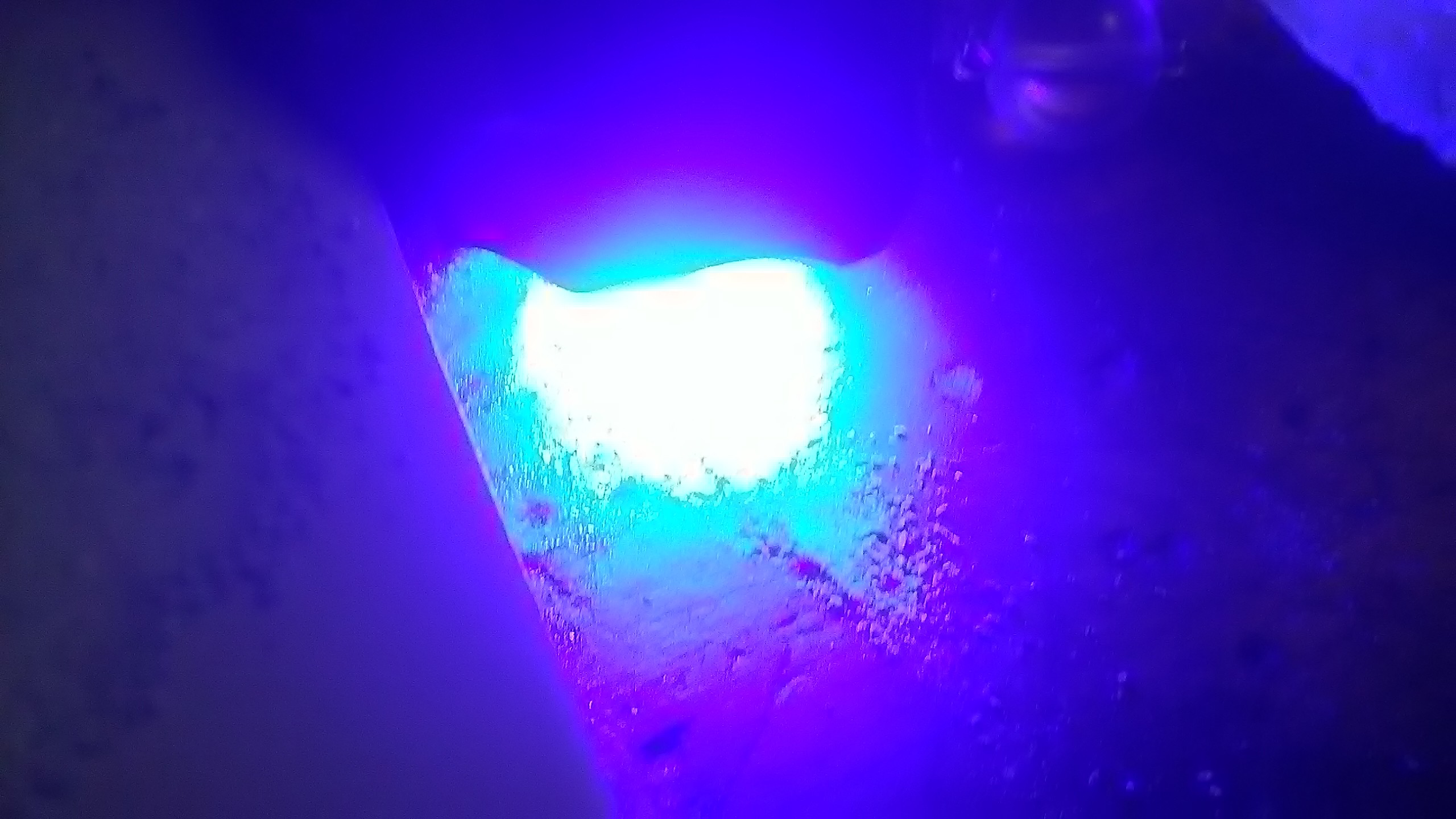-
1Mixing the powder
![]()
Mixing the material: Synthetic Ruby is made from two materials, alumina oxide and chromium oxide. Both have low health risk, but precaution should be made not to inhale the fine powders. I have tested with 90% alumina oxide and 10 % chromium oxide. Also as low as 5% chromium oxide. I mix small portions and I get great results. Just mix the two with a small stick, cover and set aside.
-
2Eching the tile
![]()
For this you need to make a jig to hold the tile in place so that the registration will be very accurate. I burn slow and at full power. Lettering, spirals, etc. I use air assist to remove the excess ceramic coating.
-
3Adding the powder ontop of the tile
![]()
I just put about 1mm (1/16") of the powder on the spiral pattern flatten it down, turn off the air assist, set the tile back in place and start the burn over.
-
4Testing the results
You need a UV flashlight to see the rubies. The Laser sinters two elements at a very high temp and forms the synthetic ruby. the tiny red dots glow and this is amazing. Enjoy
![]()
Ruby Writing
I have always been interested in Ruby Lasers. How to combine writing and lasers?
 Joseph Lavoie
Joseph Lavoie



Discussions
Become a Hackaday.io Member
Create an account to leave a comment. Already have an account? Log In.